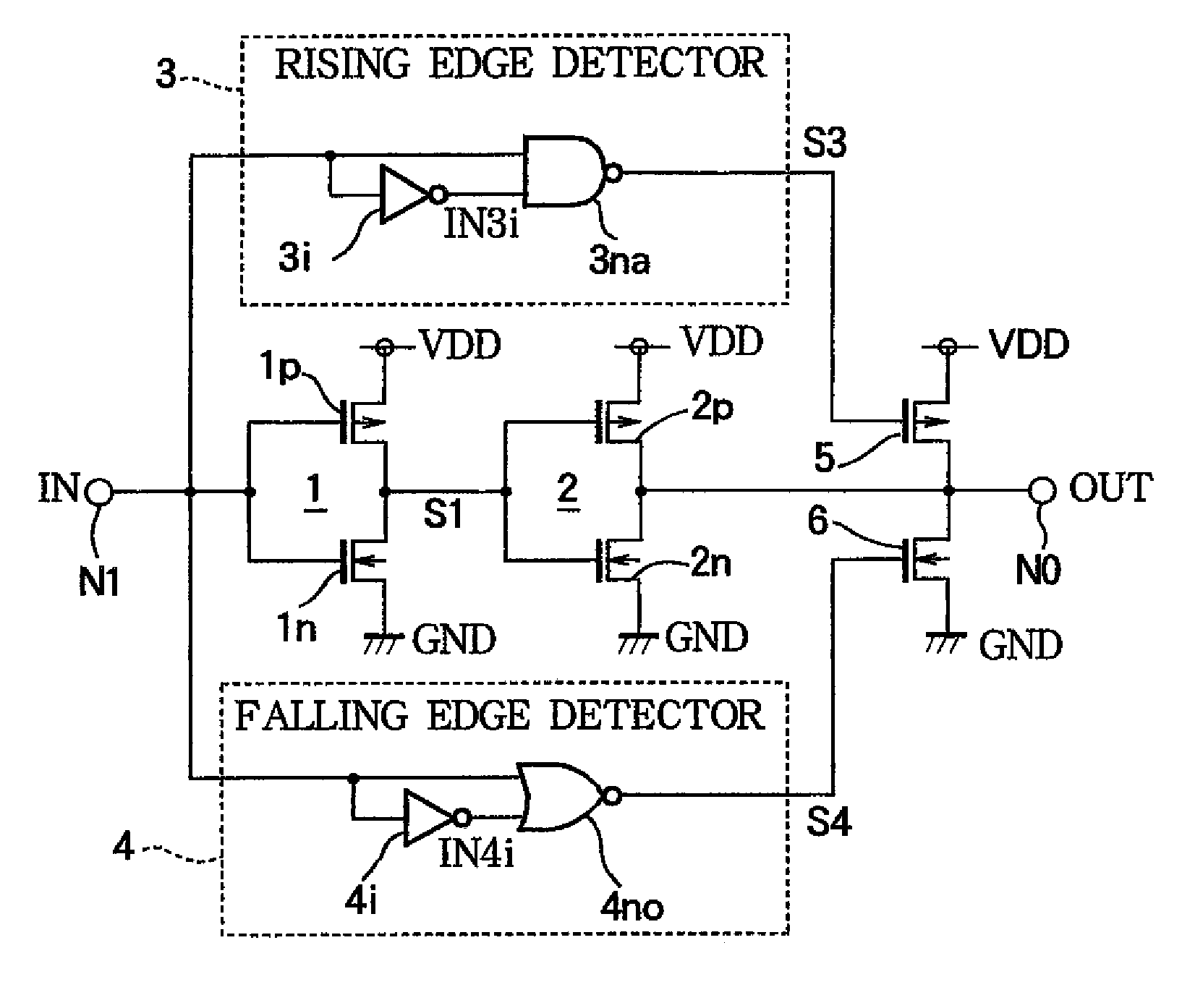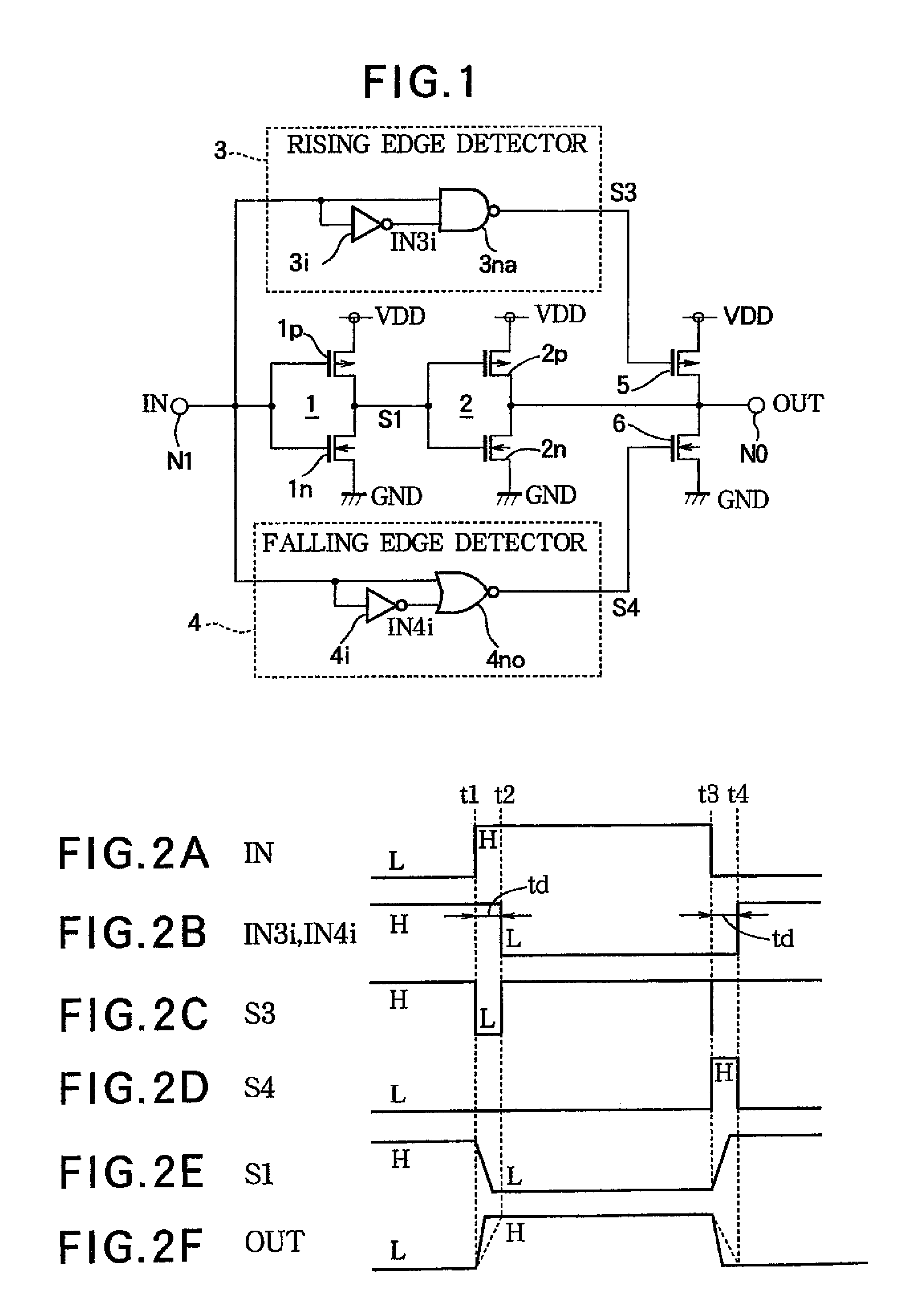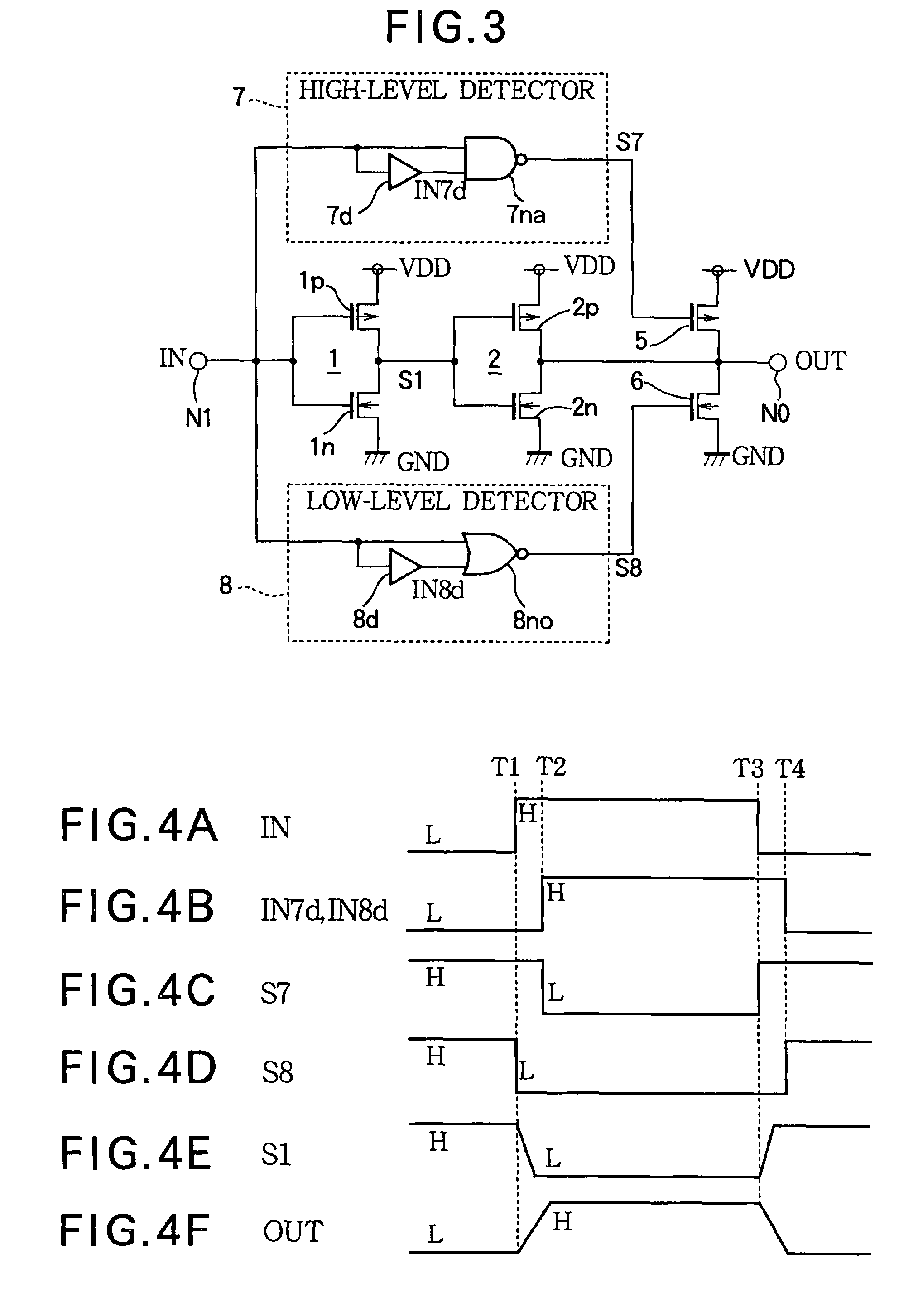Driving circuit that eliminates effects of ambient temperature variations and increases driving capacity
a driving circuit and ambient temperature technology, applied in the direction of logic circuit coupling/interface arrangement, pulse manipulation, pulse technique, etc., can solve the problems of increasing the difficulty of developing an operable lsi, increasing the difficulty of operating timing, so as to increase the driving capacity and prevent or reduce the current through the transistor
- Summary
- Abstract
- Description
- Claims
- Application Information
AI Technical Summary
Benefits of technology
Problems solved by technology
Method used
Image
Examples
embodiment 1
[0045]FIG. 1 shows a driving circuit of Embodiment 1 of the present invention.
[0046]The illustrated circuit includes an input node NI at which an input signal IN is supplied. Connected to the input node NI is a first CMOS inverter 1 comprising a PMOS 1p and an NMOS in connected between a power supply potential node VDD and a ground potential node GND.
[0047]Connected to the output side of the CMOS inverter 1 is a second CMOS inverter 2 comprising a PMOS 2p and an NMOS 2n connected between the power supply potential node VDD and the ground potential node GND. The output side of this CMOS inverter 2 is connected to an output node NO, through which the output signal OUT is output. Connected to the input node NI of the driving circuit is a rising edge detector 3 and a falling edge detector 4. The first and the second CMOS inverters 1 and 2 in combination form a driving section for power-amplifying the input signal, and outputting an amplified signal to the output node NO.
[0048]A PMOS 5 i...
embodiment 2
[0065]FIG. 3 shows a driving circuit according Embodiment 2 of the present invention. Reference numerals identical to those in FIG. 1 denote identical or corresponding elements.
[0066]The driving circuit shown in FIG. 3 is provided with a high-level detector 7, serving as a first detector in place of the rising edge detector 3, and a low-level detector 8, serving as a second detector, in place of the falling edge detector 4.
[0067]The high-level detector 7 outputs a high-level detection signal S7 which goes “L” upon expiration of a certain time period after the input signal IN rises from “L” to “H”. When the input signal IN falls from “H” to “L”, the high-level detection signal S7 is returned to “H” instantly. The falling and rising of the high-level detection signal S7 may be described as “commencement” and “termination” of the high-level detection signal S7. The high-level detector 7 comprises a delay element 7d for delaying the input signal IN by a certain time period, and a NAND g...
PUM
 Login to View More
Login to View More Abstract
Description
Claims
Application Information
 Login to View More
Login to View More - R&D
- Intellectual Property
- Life Sciences
- Materials
- Tech Scout
- Unparalleled Data Quality
- Higher Quality Content
- 60% Fewer Hallucinations
Browse by: Latest US Patents, China's latest patents, Technical Efficacy Thesaurus, Application Domain, Technology Topic, Popular Technical Reports.
© 2025 PatSnap. All rights reserved.Legal|Privacy policy|Modern Slavery Act Transparency Statement|Sitemap|About US| Contact US: help@patsnap.com



